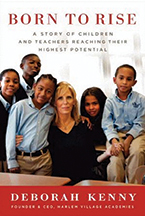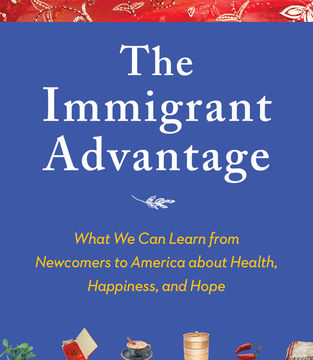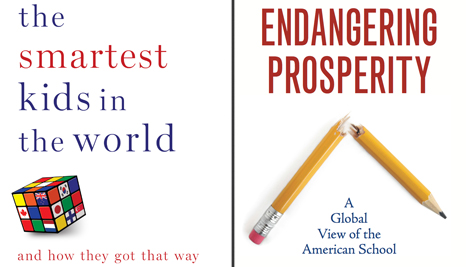No Citizen Left Behind
by Meira Levinson
Harvard University Press, 2012, $29.95; 388 pages.
As reviewed by Nathan Glazer
 Meira Levinson is not your run-of-the-mill or even your teach-for-democracy middle-school teacher. She taught in middle schools with minority and low-income children in Atlanta and Boston for eight years (she notes in passing that she was tenured in the Boston school system), after majoring in philosophy at Yale and receiving a doctorate from Oxford. (She is now associate professor at the Harvard Graduate School of Education.) She brings a new twist to the issue of the gap between American minority low-income children and middle-class children; what has engaged her passions and formidable abilities is not the academic gap, though of course she is fully aware of it, but the gap in the ability to participate effectively in the civic life, to influence political choices, the “Civic Empowerment” gap, as she labels it.
Meira Levinson is not your run-of-the-mill or even your teach-for-democracy middle-school teacher. She taught in middle schools with minority and low-income children in Atlanta and Boston for eight years (she notes in passing that she was tenured in the Boston school system), after majoring in philosophy at Yale and receiving a doctorate from Oxford. (She is now associate professor at the Harvard Graduate School of Education.) She brings a new twist to the issue of the gap between American minority low-income children and middle-class children; what has engaged her passions and formidable abilities is not the academic gap, though of course she is fully aware of it, but the gap in the ability to participate effectively in the civic life, to influence political choices, the “Civic Empowerment” gap, as she labels it.
She begins with a telling story. She is coaching her Atlanta school’s National Academic League quiz bowl team, competing against a “white” school (in Atlanta, even a “white” school does not have many whites). Her team misidentifies Kurt Cobain, and the students on the other team laugh. On the way back from the event, reviewing how they did, the students wonder why the otherwise well-behaved opposing team laughed. Ms. Levinson asks, “‘How many of you have heard of Kurt Cobain?’” No one had. Levinson explains, “‘Probably 95 percent of White people under the age of thirty could tell you who Kurt Cobain is…. Your not knowing…seems as weird to them as it might seem to you to meet somebody who has never heard of Master P….’”
“‘Oh, but Dr. Levinson [one student replies]…. everybody has heard of Master P.’”
Two worlds, with scarcely a meeting point. The story could be used to insist that some minimal acquaintance with the other world is needed to be effective in it. Levinson would not disagree, I think, but this is not the point she wants to make: E. D. Hirsch’s many books arguing for such minimal common knowledge as essential for effective reading and schoolwork does not appear in her enormous bibliography (43 pages). Her argument is rather that her students are disempowered, and a key necessity of their education is to teach them how to increase their power, their effectiveness in the real world, beginning with their immediate environment: the world of school and neighborhood.
Perhaps if they were more effective academically they would be more effective civically, and again, I do not think Levinson would disagree, but the road to empowerment for which she argues is a more direct one: student involvement in the issues that concern them, and learning through that involvement. The aim is systemic change, and if learning is aided by it, good, but secondary to overcoming the gap in empowerment.
This is “Civics” of a sort, but of a sort I think many readers will find unfamiliar. “Struggle” is not the term we generally associate with civics or civic engagement, but it is one Levinson prefers. For her, whatever progress has been made in this nation in overcoming the disadvantages of our minorities is owing to their struggles, and there is still so much to do. “Action civics” is what is needed, and the range of activities that are now being promoted in many urban schools, though hardly any significant number of them yet, and that she retails, is astonishing. This activity is far beyond “service learning,” which is implemented in many schools, and for which students may receive credit: reading to the homebound, or collecting and turning in cans to aid the hungry, or the like. Rather, systemic change is required, and one can’t help being reminded of Marx’s disdain for the softer socialism of his time.
Levinson introduces the new (for me) and unwieldy term “Guided Experiental Civic Education” to describe the education for civic struggle she favors, and she goes far beyond education talk in showing how it has been worked into her own experience as a teacher, and how she hopes it will work in the future.
Having developed her ideas—perhaps in her earlier book, The Demands of Liberal Education (Oxford, 1999), perhaps in her work as a teacher in Atlanta—she had the rare opportunity, as a teacher in the Dorchester section of Boston in a very racially and ethnically mixed school, to put them into practice. Massachusetts had decided to reduce the inordinate amount of time devoted to testing (23 out of 180 school days!), dropping tests for history and social studies, and thus making it possible for a creative administrator to introduce a new course in 8th grade, “Civics in Action.”
Levinson takes us through the effort to define the course, in which she participated, but in the end she finds too many “key questions and concepts, more vocabulary words,…overall just more ‘stuff’ to cover.” This is also her complaint with the requirements in American history, which she formerly taught. She more or less goes her own way in teaching the course, but after the first year of “Civics in Action,” the Boston Public Schools introduce standardized, districtwide midterm and final exams for it, and Levinson worries how her students will do. “The materials that I developed to support my students’ citizenship projects are adopted for dissemination districtwide and even nationally…. But my students’ performance on the district midterms and finals is relatively mediocre because I skimp on the mandated curriculum—in Fall 2005, because we spend time on Hurricane Katrina instead, and in Spring 2006 because students want to investigate the increase in youth violence in their neighborhood.”
This leads her into a full and sophisticated analysis of the effect of the movement for standards, assessment, and accountability on this kind of civic action teaching, and it is clear there is a bad mismatch. Effective civic action has to be local, dynamic, connected to current realities and developments, and the usual static forms of assessment are unsuitable. It is, after all, a form of “authentic” education, and other kinds of assessment, such as portfolios, have to be developed. (Oddly, there are no references to the work of Howard Gardner, in her own Harvard Graduate School of Education, a leading exponent of authentic education.) And this leads her further into an equally sophisticated discussion of the relationship of what she is proposing and doing for democracy. On the one hand, action civics teaches students the ways of democratic activity and participation to effect change; on the other, it will run into conflict with the program and objectives that democratic control of the schools has implemented in many places, such as which heroes to place before the students for emulation. She sees no way of resolving this conflict: the two kinds of democracy, both valid, must remain in tension. This is Dewey updated, with education for democracy in conflict with democracy in action as it acts in the real world on education.
This is a strong book. The ideas that activate it are effectively presented, the detail of real school life (like how to fit action civics into a school structure of 45-minute classes—action civics demands much more) vividly brought to life. Ethnography is not so often successfully married to large ideas. In the end, though, it is hard to imagine many teachers performing at the level that Meira Levinson did, under any reforms envisaged for the school system. And one must remain skeptical whether any democratically controlled school system could accommodate the explosive potential of action civics as she describes it.
Nathan Glazer is professor emeritus of education and sociology at Harvard University.
This article appeared in the Spring 2013 issue of Education Next. Suggested citation format:
Glazer, N. (2013). Action Civics: Education for democracy conflicts with democracy in action. Education Next, 13(2), 74-75.





